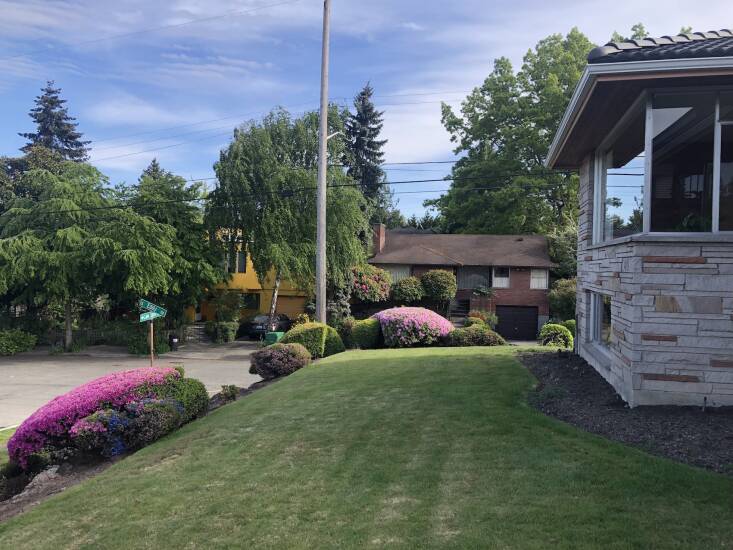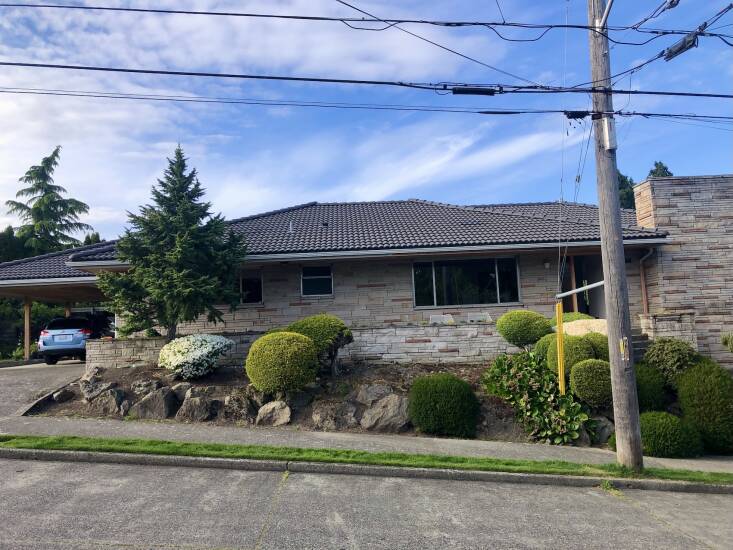When Jane Orvis and Steve Hanson bought their 1950s house in Seward Park, Seattle, they kept the original pink-tiled bathroom. But what about the mid-century shrubbery, arranged around a lawn—did that have to stay? Most people would reply, “absolutely not,” but Jane, who is a keen gardener, wanted to take a more closed-loop approach and consulted with the landscape architect Jonathan Hallet, of Supernature. On a joint visit to the Seattle Arboretum, a trio of plants in the New Zealand garden caught their attention: a topiarist’s hebe, red tussock grass, and a shrub similar to manzanita. They had all the “lightness and air and movement” that Jane’s garden was in need of.
“We stuck with the desaturated greens and off-greens typical of New Zealand plants,” says Jonathan. “We were trying to make it feel more like a dry garden, which it is.” He and Jane also planted natives, and plants from the coasts of Oregon and Northern California. “The overall tough and dry plant palette helped in creating a more climate-adapted garden that will tolerate Seattle’s increasingly long, dry and hot summers, with little supplemental irrigation required.”
“Most garden plants used in the Pacific Northwest are borrowed from Japanese or East Coast or British styles—plants like hydrangea that want summer water, which we don’t have,” says Jonathan. “Seattle has long, hot summers with a Mediterranean climate and we wanted to make a garden that was ready for that. We also tried to give it plenty of evergreen structure, so it feels full and good in the winter.”
Below, Jonathan explains what went into this mid-century landscape makeover.
Before



